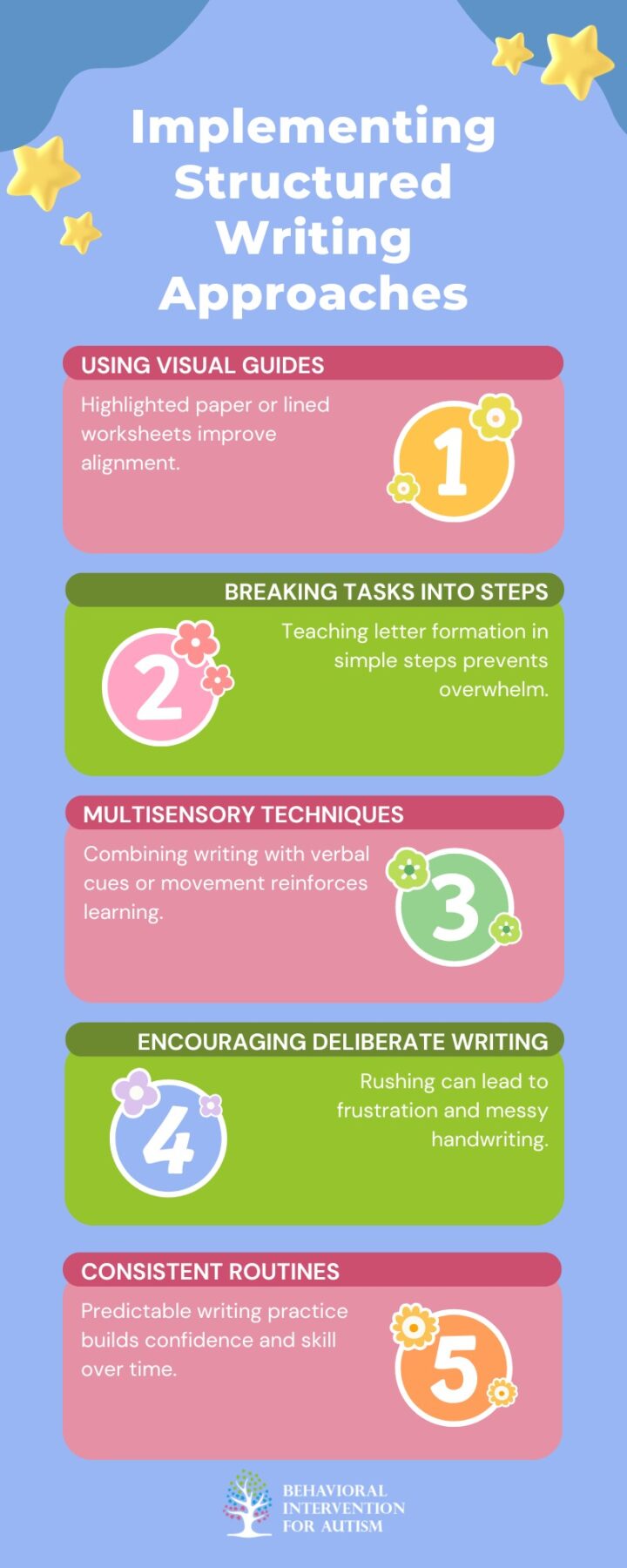
Table of Contents
Handwriting can be a challenging skill for many autistic children due to difficulties with motor coordination, sensory processing, and executive functioning. However, with the right strategies, patience, and support, they can improve their writing skills significantly. This article explores techniques to help your child with handwriting, from building foundational motor skills to using assistive tools and structured approaches.
Understanding the Challenges of Handwriting in Autistic Children
Autistic children may struggle with handwriting due to various reasons, including:
- Fine motor difficulties: Weak finger muscles can make gripping a pencil difficult.
- Sensory sensitivities: Certain textures or pressures may cause discomfort.
- Executive functioning challenges: Organizing letters and spacing words can be tricky.
- Coordination difficulties: Hand-eye coordination issues can make writing laborious.
By recognizing these challenges, parents and educators can implement targeted strategies to enhance writing abilities.
Strengthening Fine Motor Skills
Fine motor skills play a crucial role in handwriting. Strengthening these muscles can make writing easier and more comfortable. Effective activities include:
- Hand exercises: Squeezing stress balls, using tweezers, or playing with clay.
- Tracing activities: Encouraging your child to trace letters, shapes, or simple drawings.
- Cutting with scissors: Practicing cutting along lines helps with hand control.
- Building with small objects: Playing with LEGO, beads, or puzzles enhances dexterity.
- Finger painting: This helps improve hand strength while engaging sensory input.
Incorporating these exercises into daily routines will gradually enhance your child’s fine motor skills.
Improving Pencil Grip and Hand Positioning
Proper pencil grip and hand positioning can make a significant difference in handwriting quality. Some helpful strategies include:
- Using adaptive grips: Ergonomic pencil grips can aid in a more comfortable hold.
- Trying different writing tools: Thicker pencils or weighted pens may provide better control.
- Practicing proper posture: Ensure your child sits with feet flat on the ground and maintains an upright posture.
- Guided hand-over-hand assistance: Gently guiding their hand while writing can help build muscle memory.
- Frequent breaks: Writing in short intervals prevents hand fatigue.
Finding the right combination of tools and techniques can greatly improve handwriting comfort and legibility.
Addressing Sensory Sensitivities Related to Writing
Sensory processing issues can impact handwriting due to texture aversions or discomfort. Consider the following strategies:
- Choosing preferred materials: Some children may prefer softer pencils or smooth paper.
- Providing alternative surfaces: Writing on a whiteboard or chalkboard might feel more comfortable.
- Using weighted gloves or wristbands: This can provide sensory feedback and improve control.
- Implementing sensory breaks: Short breaks with fidget tools can help manage sensory overload.
- Offering hand massages: Gentle pressure on the hands before writing can reduce sensitivity.
Understanding and accommodating sensory needs ensures a more positive writing experience.
Implementing Structured Writing Approaches
A structured approach can help autistic children develop their handwriting skills systematically. Some effective methods include:

Consistency and patience are key in helping children master handwriting.
Utilizing Assistive Technology for Writing
Technology can support children who struggle with handwriting by providing alternative ways to express themselves. Useful tools include:
- Speech-to-text software: Converts spoken words into written text.
- Typing programs: Learning to type can ease handwriting frustrations.
- Tablet apps: Digital handwriting apps allow practice with various stylus grips.
- Smart pens: These record notes while also providing audio assistance.
- Word prediction software: Helps with sentence formation and spelling.
Using assistive technology reduces handwriting-related stress and boosts confidence in written communication.
Encouraging a Positive Mindset Towards Writing
Fostering a positive attitude toward handwriting can make the learning process smoother. Effective ways to encourage motivation include:
- Praising effort over perfection: Celebrate small improvements.
- Incorporating interests: Let your child write about topics they enjoy.
- Making it fun: Use games, storytelling, or art to integrate writing practice.
- Avoiding pressure: Allow breaks and encourage a relaxed approach.
- Setting achievable goals: Gradual progress leads to greater confidence.
Building a supportive and stress-free environment helps children feel more comfortable with handwriting practice.
Helping your autistic child with handwriting requires patience, creativity, and a personalized approach. Strengthening fine motor skills, addressing sensory sensitivities, using adaptive tools, and implementing structured strategies can make a significant difference. If challenges persist, seeking support from occupational therapists or specialists may provide additional guidance. With consistent effort, your child can develop stronger handwriting skills and greater confidence in their abilities.
Support Your Child’s Handwriting Skills with Expert Guidance
Helping your autistic child develop strong handwriting skills takes patience, the right strategies, and professional support. Our team at Behavioral Intervention for Autism provides individualized ABA therapy in Florida, using evidence-based techniques to improve fine motor skills and writing abilities. We focus on engaging, hands-on methods that make learning enjoyable while building confidence. Every child receives a personalized plan designed to meet their unique needs. If you’re looking for compassionate, effective support, we’re here to help. Reach out today to learn how we can empower your child with the skills they need for success.
Sources:
- 9 Common Obsessions of Children With Autism You Should Know - February 25, 2025
- What is Neurodiversity? A Guide to Embracing Differences - February 25, 2025
- Understanding Hyperfocus in Autism: What It Means and Why It Happens - February 25, 2025

